On 1 July 2020, the Human Rights Council held its Annual Full Day meeting on the Rights of the Child, dedicated to the theme of realising children’s rights through a healthy environment. For the first time ever, two child human rights defenders addressed all States in the Human Rights Council to urgently demand recognition and respect for their right to a healthy environment. They were joined by expert panelists from the UN Committee on the Rights of the Child, the World Health Organization, UNICEF, and the UN Special Rapporteur on Human Rights and the Environment.
During the meeting, the Children’s Environmental Rights Initiative (CERI), together with the Child Rights Connect Working Group on the Environment, UNICEF and more than 20 other organisations and experts, launched a Joint Call to Action to the Human Rights Council demanding formal recognition of children’s right to a healthy environment, and identifying 7 concrete measures for action.
Here are our 5 top takeaway messages from the day:
1) THE CLIMATE AND ENVIRONMENTAL CRISIS IS A CHILD RIGHTS CRISIS.
The evidence is indisputable. A quarter of all deaths among children under the age of 5 each year – a devastating 1.7 million children globally – are due to preventable environmental causes. As the UN Special Rapporteur on Human Rights and the Environment stated, children’s rights are disproportionately threatened and violated by the global climate emergency, the precipitous decline in biodiversity, and pervasive toxic pollution. The COVID-19 pandemic has laid bare just how vulnerable humans are to threats resulting from environmental degradation, such as the increased risk of infectious diseases – like COVID-19 – leaping from animals to humans. Economies globally have been brought to their knees, with catastrophic socio-economic consequences for children’s rights. Yet even the COVID-19 crisis pales in comparison to the looming environmental and climate crisis, for which there will be no vaccine, and from which no one will be able to self-isolate – least of all children.
“The child’s right to a healthy and a sustainable environment is inextricably linked and bound to the other rights in the Convention [on the Rights of the Child]. Without it, there is no setting within which the Convention can operate.”
2) CHILDREN HAVE THE RIGHT TO BE HEARD AND IT IS OUR OBLIGATION TO LISTEN.
For the first time ever, two child environmental human rights defenders participated in the Human Rights Council panel. It is fitting and perhaps unsurprising that this historic – albeit long overdue – breakthrough came in relation to the environment, a topic on which millions of children across the world have raised their voices, taken to the streets, and demanded action. Juliana, a 15 year-old environmental activist from Colombia, called for transformational change in the ways we inhabit the planet and relate to each other as humanity. She drew attention to the demands of children from CERI’s Latin American and Caribbean child and youth consultation on children’s environmental rights in 2019, including urgent measures to recognize children and youth as political actors in decision-making; compliance with national and international agreements on deforestation; water as a fundamental right; and mechanisms to guarantee the protection of environmental human rights defenders.
Junior, a 14 year-old environmental activist from Ivory Coast, highlighted the negative impacts of businesses on the environment, leading to multiple and disproportionate effects on children’s health and well-being. He highlighted how he had benefited from capacity building activities to understand his environmental rights and responsibilities, and calls that children in his community have made to authorities, including the need to: create green and safe spaces for children to play in; ban the parking of large trucks on roads and near playgrounds; establish complaints mechanisms for the community and children regarding pollution; involve village chiefs, communities, young leaders, women, children and civil society in local decision-making concerning the environment, particularly with respect to the operation of companies; and support child-led initiatives to promote their rights.
“Governments must recognize us as political actors in decision-making and take urgent measures to create spaces for diverse child and youth representation and participation. ”
“If nothing is done to protect the environment then all your efforts for the realization of our rights will be scorched by the sun and drowned by the rain.”
3) IT IS TIME FOR GLOBAL RECOGNITION OF THE HUMAN RIGHT TO A HEALTHY ENVIRONMENT, TO PROTECT OUR PLANET AND OUR CHILDREN.
Numerous speakers highlighted the need for global recognition of the human right to a healthy environment, and the particular relevance of such a right for children and future generations. This right comprises the right to a safe climate, clean air, safe water and adequate sanitation, healthy and sustainably produced food, non-toxic environments, healthy biodiversity and ecosystems, and the rights to environmental education, information and access to justice. As set out in our Joint Call to Action, it is beyond debate that children are wholly dependent on each of these elements to lead dignified, healthy and fulfilling lives.
“This Council should move quickly to pass a resolution recognizing everyone, especially children, have the right to a safe, clean, healthy and sustainable environment.”
“We believe that global recognition [of the right to a safe, clean, healthy and sustainable environment] would have numerous positive effects, such as strengthening of environmental laws and policies, improving implementation and facilitating greater public participation, including of children.”
4) WE HAVE THE SOLUTIONS REQUIRED.
While the challenge before us is enormous, so are the opportunities. Discussion highlighted the immense benefits for children that would flow from measures such as investment in resilient basic services and renewable energy, eradicating deforestation, protecting and restoring healthy ecosystems, and preventing pollution by shifting to a circular economy. The opportunity to ‘build back better’ from the COVID-19 crisis should be seized. While many good practices exist, the need for States to accelerate and scale up urgent environmental action, based on children’s best interests – and drawing on children’s ingenuity, creativity and perspectives – is urgent.
As the Human Rights Council develops its resolution on realizing children’s rights through a healthy environment, for adoption in September, we hope they will heed the seven recommendations set out in our Joint Call to Action, informed by the priorities and messages of children themselves.
“Reducing environmental risk factors represents the best investment for children’s futures.”
5) MANY STATES AGREE!
Perhaps one of the most striking takeaway messages from the day was the high degree of consensus among States that the environmental crisis undermines children’s rights, that a safe and healthy environment is essential to the realization of children’s rights, and that States must ensure children’s participation in decision-making with respect to the environment. Many States highlighted examples of policies, programmes and initiatives being implemented at the national level.
From CERI’s side, we were delighted to hear multiple calls for more effort to empower and listen to children, to raise awareness and gather information, to invest in environmental education, to adopt legislation, policies and administrative measures based on children’s rights, and to develop strong normative guidance – all core aspects of CERI’s mission and activities.
“Environmental degradation is a pressing human rights challenge with irreversible and lifelong consequences for children…Preventive and precautionary action, including adequately enforced laws and monitoring, should lie at the heart of all protection efforts. More needs to be done to improve children’s participation and access to justice on environmental matters.”
“…there is still a long way to go to guarantee implementation of the right of children to a healthy environment. We have to develop an inclusive and stable collective approach and implement the best norms.”
“[Environmental] impacts, while devastating, are reversible. But mitigating these risks requires a set of coherent, coordinated and sustained policies, underpinned by science, political will and international cooperation…The international community has a shared responsibility to ensure that all children are provided a clean, healthy, safe and violence-free environment in which they can enjoy all their rights.”
“We are all witnesses to the call of action shared by young child activists, and we have to respect and protect the rights of children to a healthy environment and ensure their access to justice and remedies in situations of environmental degradation… Governments also need to establish educational programmes to raise awareness and capacity to respond to current challenges.”






